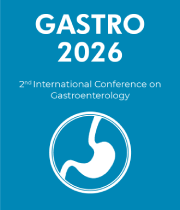Title : Endoscopic biliary drainage in the palliative treatment of Klatskin’s tumors: Outcomes and factors associated with success or failure
Abstract:
Introduction:
Klatskin's tumor is a cholangiocarcinoma that develops from the right or left bile ducts and the upper part of the main bile duct. They are usually diagnosed at an advanced, inoperable stage, and have an extremely poor prognosis. Biliary drainage is proposed in palliative situation and carries a high risk of infectious complications.
The aim of our work is to report the results of endoscopic biliary drainage as well as the factors associated with its success or failure.
Aims & Methods:
This is a retrospective and analytical study of 75 patients, conducted between July 2009 and August 2021, including all patients admitted with Klatskin's tumor and for whom endoscopic drainage was indicated.
Factors associated with the success or failure of endoscopic treatment were studied by logistic regression analysis. Statistical analysis was performed using SPSS version 22.0 software.
Results:
Average age of our patients was 62.67 +/-12 years with extremes ranging from 31 years to 93 years. Our series was characterized by a male predominance of 68% or a sex ratio of 2.12. Cholangiocarcinoma was classified as bismuth IV in 50.6% of patients, bismuth IIIa in 30% of patients, bismuth IIIb in 13% of patients and bismuth II in 6% of patients. Sixteen percent of patients had liver metastases. Endoscopic drainage was successfully performed in 81.3% of patients by plastic prosthesis in 32% of cases (n=24), by a metal prosthesis in 45.2% (n=34) and by nasobiliary drain in 4.1% (n=3). Forty-seven percent of patients (n=35) had dilatation of the stenosis prior to stenosis prior to prosthesis placement. Causes of stenting failure were primarily related to failure of papilla catheterization, failure to pass the guidewire through the stenosis, or duodenal invasion by the tumor. In multivariate analysis and adjusting for age, gender, Bismuth tumor type, presence of metastases and endoscopic dilatation of the stenosis, only the presence of metastases, endoscopic dilatation of the stenosis and Bismuth tumor type modified the outcome.
The Bismuth classification affect the success rate. Indeed, endoscopic dilatation of the stenosis prior to stenting increases the success rate fourfold. prosthesis increases the success rate by a factor of 4 [OR=4; p=0.01], whereas the presence of metastases decreases this rate by 65% [OR=0.35; p<0.001]. However, tumors classified as Bismuth IV [OR=8; p<0.001] or Bismuth IIIa [OR=5; p=0.004] were associated with a risk of endoscopic treatment failure.
Conclusion:
Our study suggests that the presence of metastatic hilar cholangiocarcinoma classified as Bismuth IV or Bismuth IIIa appear to be associated with failure of endoscopic endoscopic biliary drainage of Klatskin's tumors, whereas endoscopic dilatation prior to prosthesis placement appears to be associated with success.




